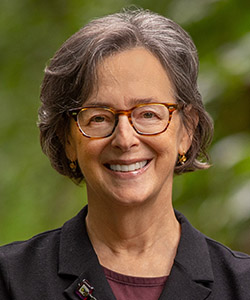In the 1970s, during the rise of what was then known as the women’s movement, one popular T-shirt proclaimed: “I haven’t come a long way, and I’m not a baby.” It was a clever riposte to a high-profile cigarette ad campaign of the era that linked smoking and feminism. That T-shirt slogan is one that female lawyers at large firms today might want to adopt as their own.1
In his new article, Eli Wald sheds light on why women in BigLaw have not yet come “a long way.” He explains that large law firms have adopted a professional ideology of hypercompetitiveness, which has transformed the firms into sites where the opportunity to pursue a balanced life is, by definition, completely absent. This is “bad news for women lawyers and for the prospect of greater gender equality in the legal profession.”2 (P. 2287). In fact, it’s bad news for everyone: according to Joyce Sterling and Nancy Reichman, in the same symposium, “the long hours are taking their toll on male associates as well,” which is confirmed also by Dau-Schmidt et al in the Michigan alumni study.
Wald explains that the transformation relates not only to a change in the content of the professional ideology itself, but also to the shift from the ideology being one relating to individual lawyers to it being about firms. He chronicles the development of professional ideology beginning with the Cravath firm, from “WASP ‘meritocracy,’” through “competitive meritocracy,” and to today’s hypercompetitiveness. Hypercompetitiveness is used to justify the long hours and high pay characteristic of BigLaw: “it portrayed lawyers as near-heroic servants, zealous service providers who pursue the interests of their clients around the clock. Under this new ideology, working 24/7 was considered a badge of honor, proof that lawyers were truly committed to client-centered service.” (P. 2271). Here’s the rub: “’Ideal’ candidates [must] not only … meet merit credentials but also … be willing to sacrifice personal lives, indeed to allow their professional identity to overtake and consume their personal identity.” (P. 2272).
The interaction between hypercompetitive ideology and gender stereotypes raises presumptions against women’s ability to navigate paths to advancement in BigLaw. This means that even the adoption of flexible and part-time work arrangements is a doomed strategy, because it highlights the identification of lawyers who take advantage of these programs as lacking the “total devotion and utmost loyalty to the firm and its clients.” (P. 2286). That is, without changing both underlying ideology and stereotypes, most adjustments to firm structure and policies are unlikely to lend real support to individual BigLaw lawyers, much less women lawyers at the firms. The tensions are borne out in the popular discussion of these issues on a nearly daily basis. In a recent posting on TechnoLawyer Blog titled “BigLaw: Large Firms Are From Mars, Female Lawyers Are From Venus,” for example, the dilemmas of practicing lawyers were reported as perfectly in line with Wald’s analysis: one lawyer who took advantage of a part-time program in order to spend more time with her infant son described that she “billed just as many hours, and was just as available to my colleagues and clients, as I had been before. The only difference was that I was paid less.’” In fact, partners at her firm “’were generally peevish at the notion that an associate might not be available 24/7’” – despite the firm’s part-time policy.
Wald is an astute analyst of BigLaw, and in this and earlier writing he highlights the interaction between individual lawyers and their firms as a mechanism for change as well as stability. Unpacking the relationship of professional ideology to gender stereotypes illuminates the framework that perpetuates gender imbalance in BigLaw. But within this framework, there also may be lessons to be learned by delving into distinctions of firms and their managers, e.g. Linda Hudson of BAE Systems,3 cities and practice specialties, and Supreme Court practice (comment of Virginia Sykes); these might reveal alternatives to the hypercompetitiveness ideology that so clearly characterizes BigLaw deal-lawyering in major financial centers. I’d like to think that these alternatives (and the contexts in which they emerge) will compete for influence in generating the next iteration of professional ideology.
- Emily Barker, Stuck in the Middle, Am. Law. (June 1, 2009).
- See R. Dinovitzer, G. Plickert, R. Sandefur, and J. Sterling, After the JD II: Second Results from a National Study of Legal Careers (2009), at p.63, teasing out differences between men and women in equity and nonequity partnership positions, but finding that both men and women are leaving private law firms.
- Linda Hudson said on leadership: “In those early years, I was often told and treated like I didn’t count, I didn’t matter. I made more money than my husband, but they wouldn’t count my income. In the workplace, there were no laws at the time to protect women from sexual harassment. There were all kinds of evil and ugly things that happened in the workplace, and there was nothing you could do but find a way to cope and to find a way to make things happen. I think it’s those kinds of things that formed not only the person I was in my 20s, but also set the stage for the person I am today. I know what it’s like to be mistreated. I know what it’s like to be discriminated against. I know what it’s like to feel like you’re invisible in a room, and I know what it’s like to have to find the skills to cope with that and still do well and still succeed and not let it defeat you. I think, in large part, that’s defined who I am and how I do things. And in many ways it has given me an ability to deal with people that’s more inclusive and more empathetic.”









Wald is giving a talk on this topic tomorrow (http://www.colegaldiversity.org/index.php?option=com_content&task=view&id=33&Itemid=53). I’m looking forward to hearing more about this exciting topic!